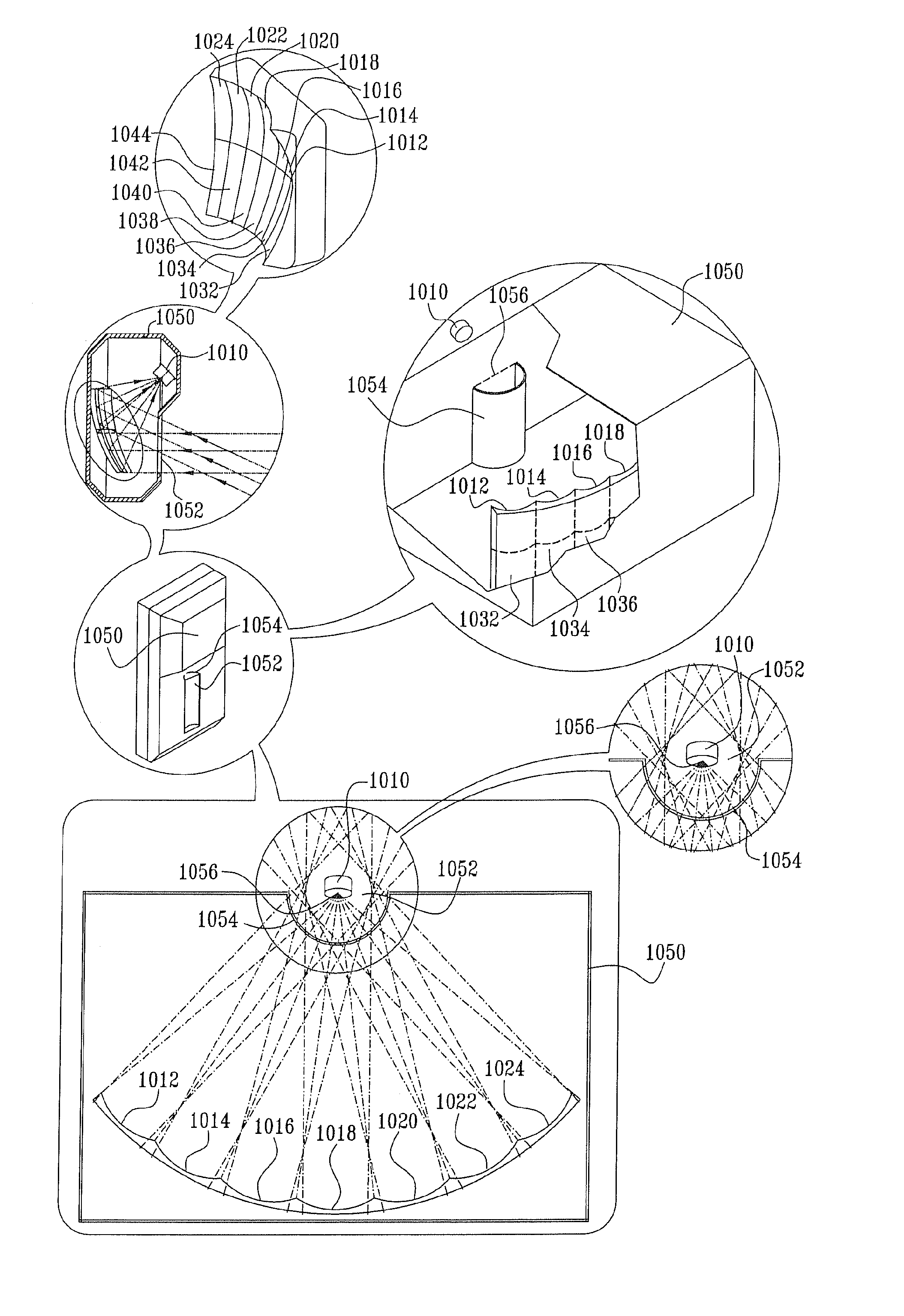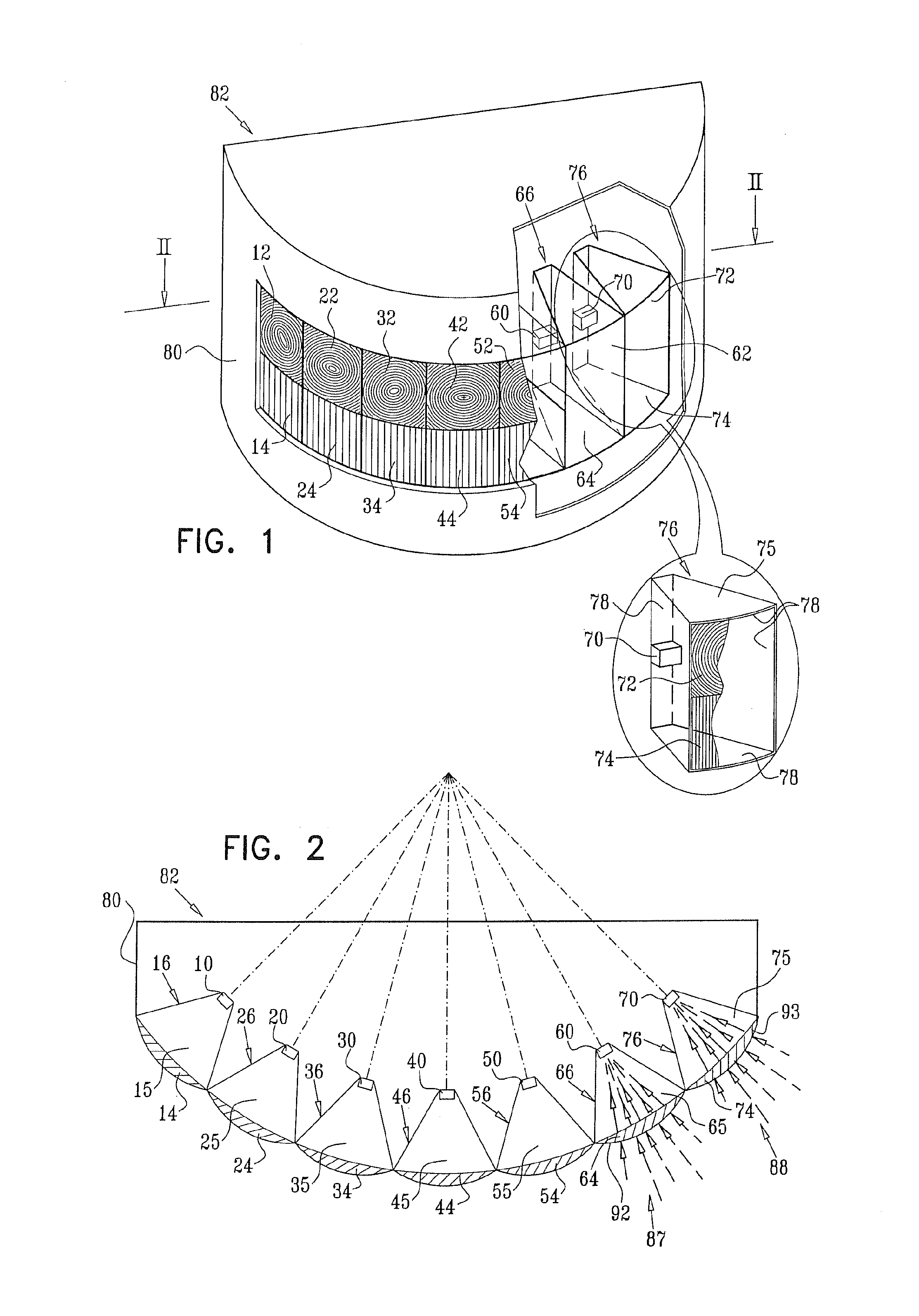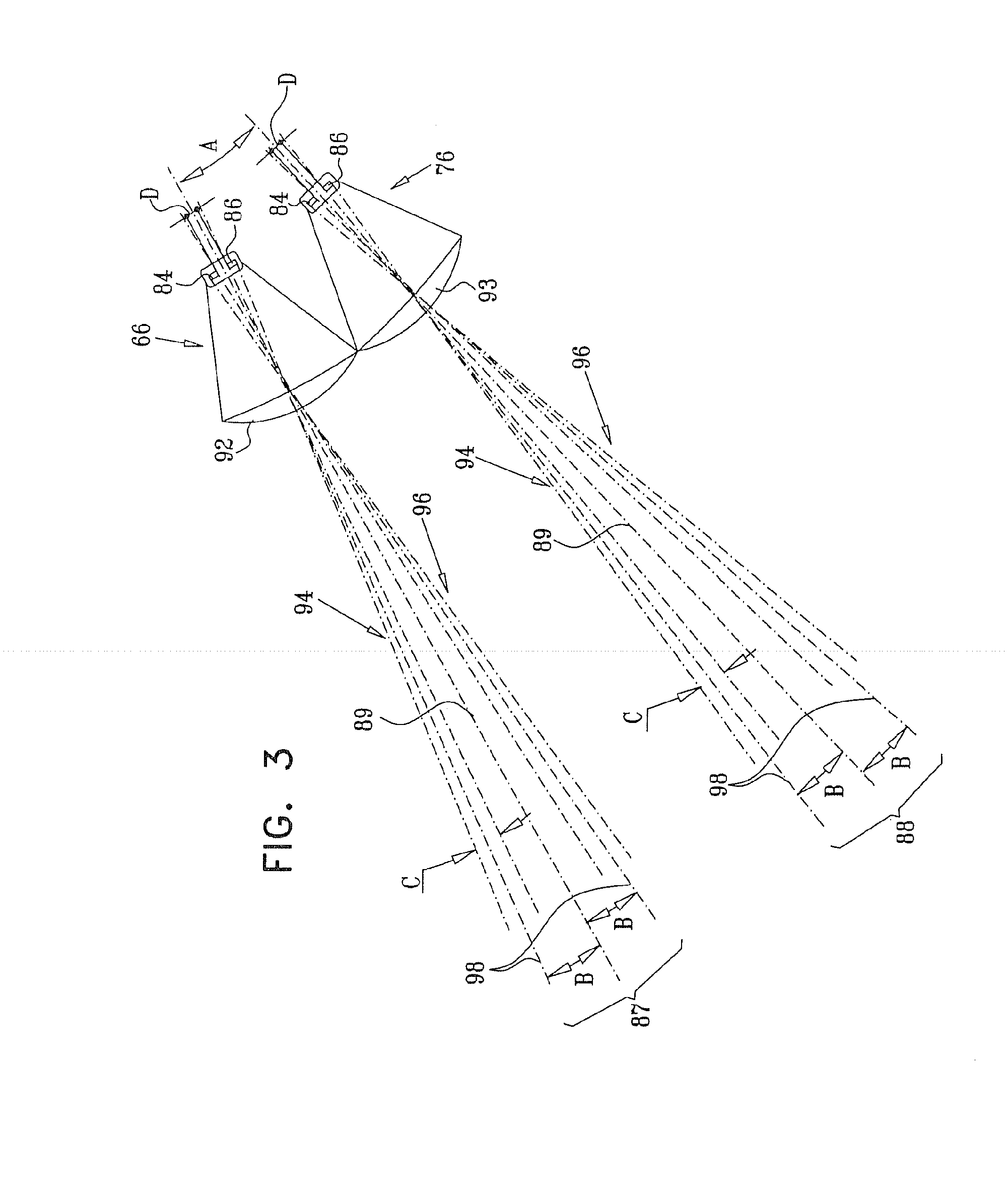Passive infra-red detectors
a detector and infra-red technology, applied in radiation pyrometry, instruments, material analysis, etc., can solve the problems of significant thermal interference signals, false alarms, and insufficient detection reliability, so as to reduce the “undesired signals” and improve the signal processing
- Summary
- Abstract
- Description
- Claims
- Application Information
AI Technical Summary
Benefits of technology
Problems solved by technology
Method used
Image
Examples
Embodiment Construction
[0188] For the sake of clarity of description throughout, the following definitions are employed generally throughout.
[0189] A “zone” is defined to include fingers of radiation, each corresponding to a detection region seen by a single element of a sensor through an optical segment, and the region or regions therebetween. Thus, when dual element sensors are employed, each zone includes two fingers.
[0190] A “sub field-of-view” is defined to include one or more zones and the region or regions therebetween.
[0191] A “field-of-view” is defined to include one or more sub fields-of-view.
[0192] It is important to note that in detectors designed to protect wide azimuthal areas, the field-of-view may be divided into multiple sub fields-of-view, which typically correspond in number to the number of lens or mirror segments in the uppermost row of optical elements.
[0193] The term “azimuth” refers to the angular extent of a zone, sub field-of-view or field-of-view in a plane wherein expected...
PUM
 Login to View More
Login to View More Abstract
Description
Claims
Application Information
 Login to View More
Login to View More - R&D
- Intellectual Property
- Life Sciences
- Materials
- Tech Scout
- Unparalleled Data Quality
- Higher Quality Content
- 60% Fewer Hallucinations
Browse by: Latest US Patents, China's latest patents, Technical Efficacy Thesaurus, Application Domain, Technology Topic, Popular Technical Reports.
© 2025 PatSnap. All rights reserved.Legal|Privacy policy|Modern Slavery Act Transparency Statement|Sitemap|About US| Contact US: help@patsnap.com



